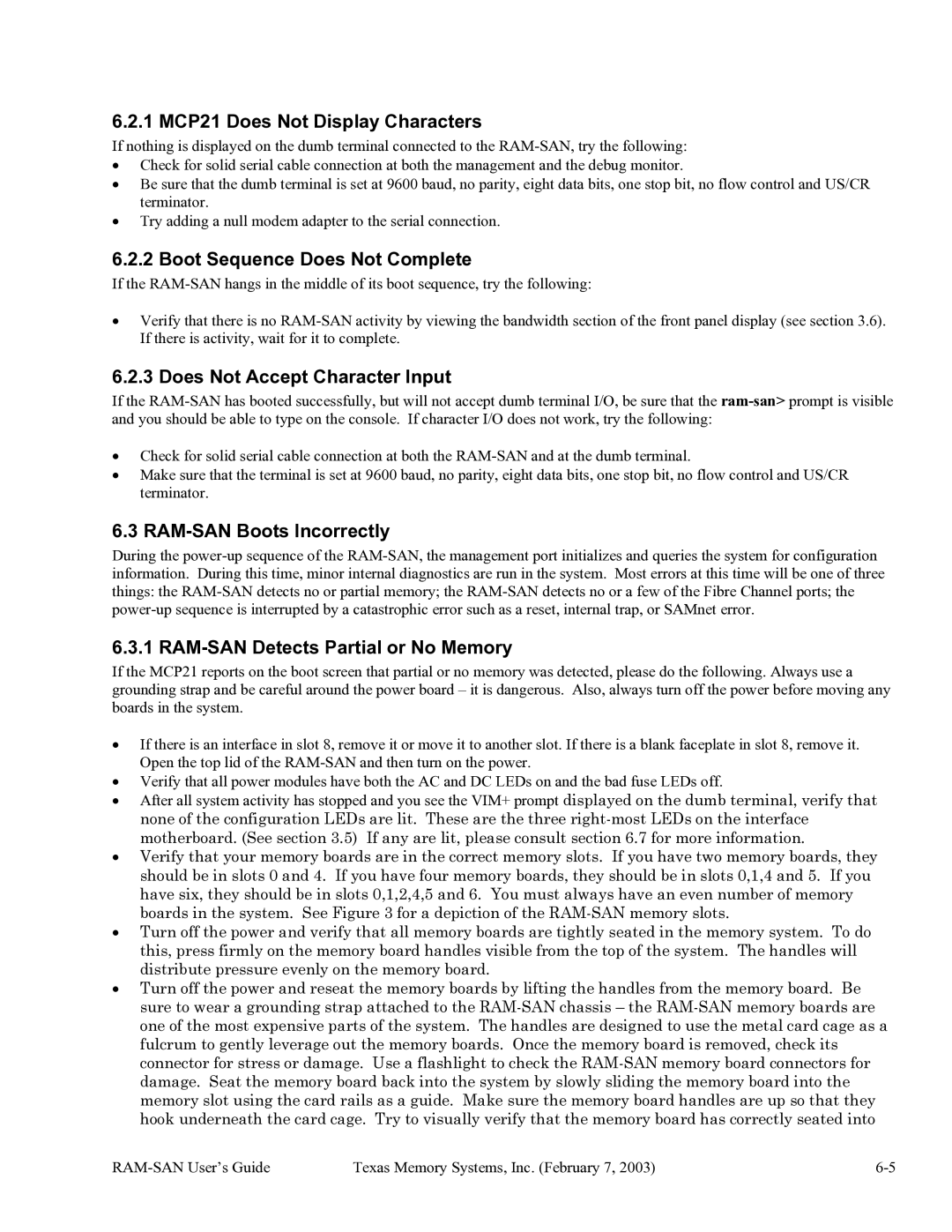6.2.1 MCP21 Does Not Display Characters
If nothing is displayed on the dumb terminal connected to the
•Check for solid serial cable connection at both the management and the debug monitor.
•Be sure that the dumb terminal is set at 9600 baud, no parity, eight data bits, one stop bit, no flow control and US/CR terminator.
•Try adding a null modem adapter to the serial connection.
6.2.2 Boot Sequence Does Not Complete
If the
•Verify that there is no
6.2.3 Does Not Accept Character Input
If the
•Check for solid serial cable connection at both the
•Make sure that the terminal is set at 9600 baud, no parity, eight data bits, one stop bit, no flow control and US/CR terminator.
6.3 RAM-SAN Boots Incorrectly
During the
6.3.1 RAM-SAN Detects Partial or No Memory
If the MCP21 reports on the boot screen that partial or no memory was detected, please do the following. Always use a grounding strap and be careful around the power board – it is dangerous. Also, always turn off the power before moving any boards in the system.
•If there is an interface in slot 8, remove it or move it to another slot. If there is a blank faceplate in slot 8, remove it. Open the top lid of the
•Verify that all power modules have both the AC and DC LEDs on and the bad fuse LEDs off.
•After all system activity has stopped and you see the VIM+ prompt displayed on the dumb terminal, verify that none of the configuration LEDs are lit. These are the three
•Verify that your memory boards are in the correct memory slots. If you have two memory boards, they should be in slots 0 and 4. If you have four memory boards, they should be in slots 0,1,4 and 5. If you have six, they should be in slots 0,1,2,4,5 and 6. You must always have an even number of memory boards in the system. See Figure 3 for a depiction of the
•Turn off the power and verify that all memory boards are tightly seated in the memory system. To do this, press firmly on the memory board handles visible from the top of the system. The handles will distribute pressure evenly on the memory board.
•Turn off the power and reseat the memory boards by lifting the handles from the memory board. Be sure to wear a grounding strap attached to the
| Texas Memory Systems, Inc. (February 7, 2003) |
